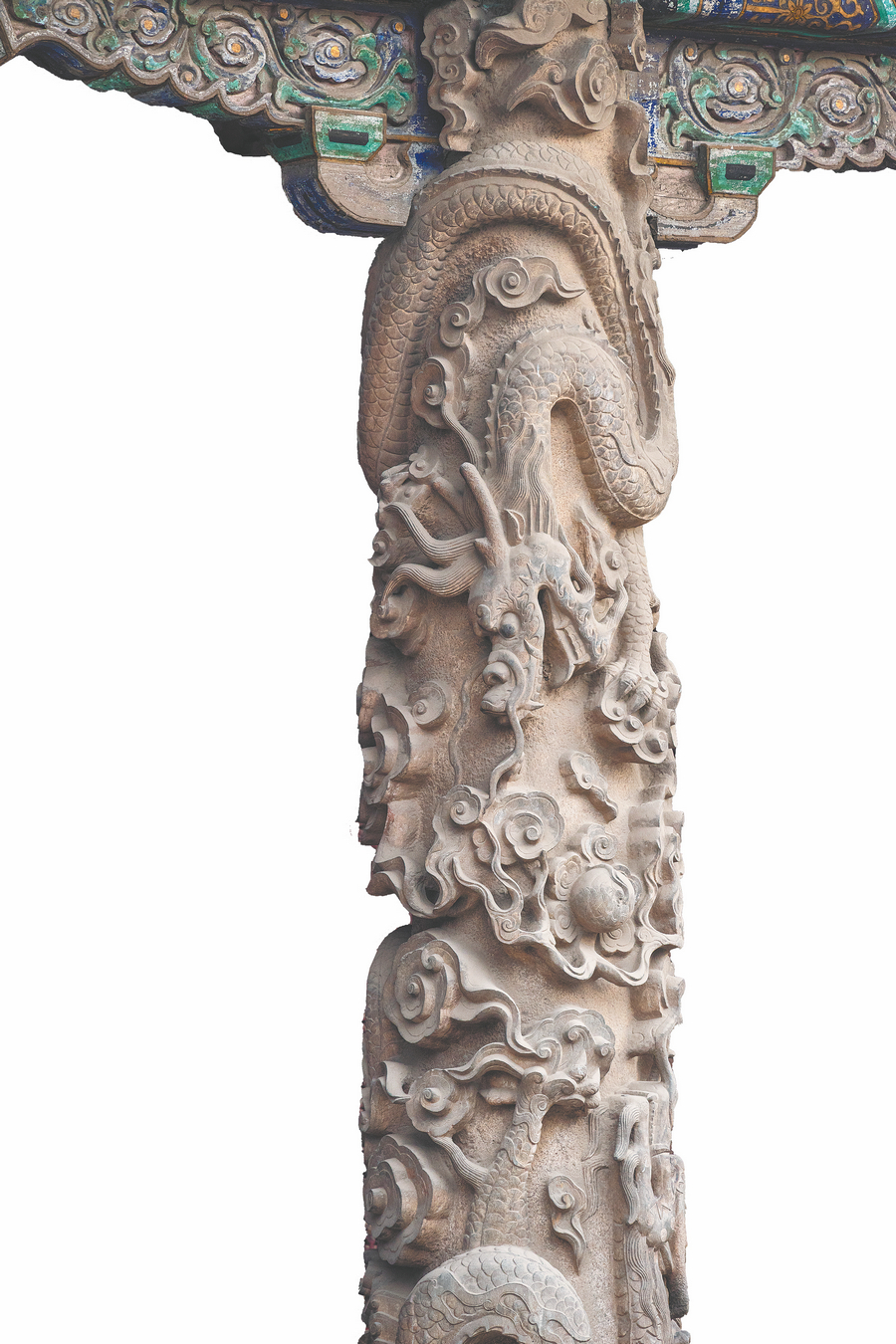

The columns are wrapped in the scaled, sinuous bodies of majestic dragons, half-hidden in clouds. Manes billowing and eyes glistening with intensity, they are there to watch over the sacred place and to ensure the social order as envisioned by the master philosopher.
The columns were erected around 1500, during the Ming Dynasty (1368-1644), with major renovations done during the ensuing Qing Dynasty (1644-1911). In court portraits both the Ming and Qing rulers routinely wear voluminous dragon robes whose resplendent patterns, woven or embroidered into shimmering silk, constitute for many the most iconic images of a Chinese dragon.
Equally well-known, at least to aficionados of ancient Chinese art, is a mid-13th-century ink painting titled Nine Dragons, held by the Museum of Fine Arts, Boston. Within a space of 9 meters — the entire work stretches about 15 meters, including many postscripts — the artist Chen Rong captured the elusive nature of his mythical protagonists by letting them in and out of a seemingly endless continuum of clouds, mist and whirlpools. The hand scroll, painted during the rule of Zhao Yun, a devout Taoist and fifth emperor of the Southern Song Dynasty (1127–1279), is believed to have referred directly to the dynamic force of nature that Taoism has long celebrated.